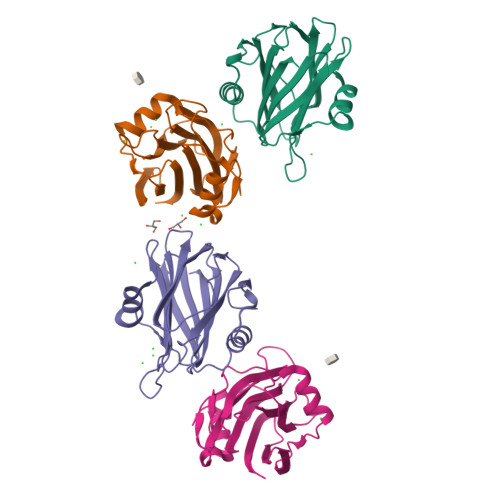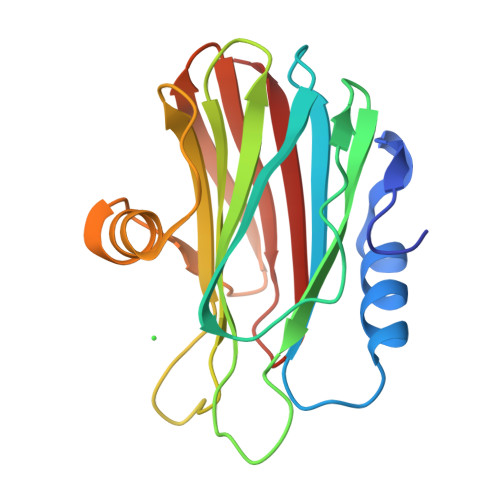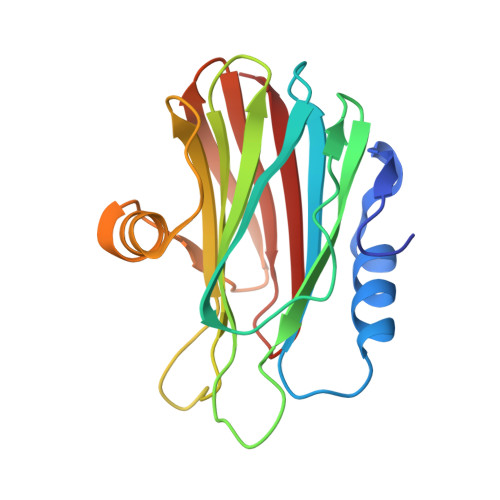Haemolytic actinoporins interact with carbohydrates using their lipid-binding module
Tanaka, K., Caaveiro, J.M.M., Morante, K., Tsumoto, K.(2017) Philos Trans R Soc Lond B Biol Sci 372
- PubMed: 28630155
- DOI: https://doi.org/10.1098/rstb.2016.0216
- Primary Citation of Related Structures:
5GWF - PubMed Abstract:
Pore-forming toxins (PFTs) are proteins endowed with metamorphic properties that enable them to stably fold in water solutions as well as in cellular membranes. PFTs produce lytic pores on the plasma membranes of target cells conducive to lesions, playing key roles in the defensive and offensive molecular systems of living organisms. Actinoporins are a family of potent haemolytic toxins produced by sea anemones vigorously studied as a paradigm of α-helical PFTs, in the context of lipid-protein interactions, and in connection with nanopore technologies. We have recently reported that fragaceatoxin C (FraC), an actinoporin, engages biological membranes with a large adhesive motif allowing the simultaneous attachment of up to four lipid molecules prior to pore formation. Since actinoporins also interact with carbohydrates, we sought to understand the molecular and energetic basis of glycan recognition by FraC. By employing structural and biophysical methodologies, we show that FraC engages glycans with low affinity using its lipid-binding module. Contrary to other PFTs requiring separate domains for glycan and lipid recognition, the small single-domain actinoporins economize resources by achieving dual recognition with a single binding module. This mechanism could enhance the recruitment of actinoporins to the surface of target tissues in their marine environment.This article is part of the themed issue 'Membrane pores: from structure and assembly, to medicine and technology'.
Organizational Affiliation:
Department of Chemistry and Biotechnology, The University of Tokyo, Bunkyo-ku, Tokyo 113-8656, Japan.
























